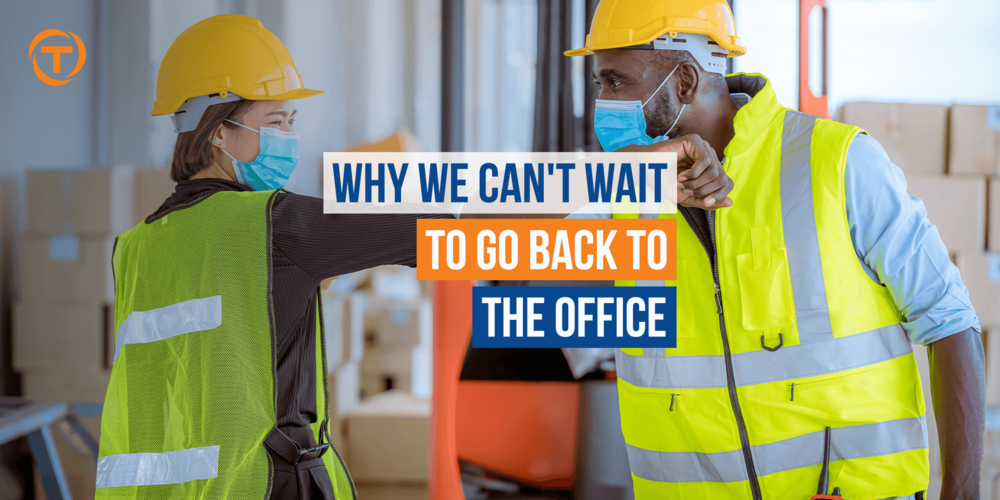Just two years ago, working from home (even just one day a week!), having a flexible schedule or becoming a 'digital nomad' was but a dream for many. To our surprise, a dream that has become a sweet-and-sour reality thanks to the COVID-19 pandemic, where many of us were forced to switch to remote and online work with the click of a button.
Removed from the CBD city buzz, many of us embraced the global remote work lifestyle – both in a professional and personal sense. With the ability for employees to work from home for any company in the world, competition for talent intensified. Taking commute out of the equation gave many people valuable hours back in their day – making exercise and time with the family easier to fit into the daily schedule. A stroll down the beach or swim at the pool, a coffee break with your partner or quick play with the kids – one thing is for sure, remote working did our physical and mental wellbeing a favour – in one sense at least. We felt an increased sense of control, more time to dedicate to ourselves, families, homes, and bodies.
Fast-forward to today, and many will say remote working has become a challenging reality. Combining the work and home environment has blurred the lines and norms for many. While we loved the comfy clothes, home environment and seeing our co-workers' 'real' selves via online meetings – the novelty of remote working has started to wear thin.
Over time, we discovered working from home comes with its own unique set of challenges. Many of us didn't have a dedicated office space, leaving us working from the kitchen table. Others spent more time with their partners or family and felt suffocated. Some quickly developed cabin fever, resorting to walks around the block just to feel alive and human again. And – many discovered Zoom meetings weren't as productive as face-to-face catch-ups.
Here are ten reasons why we can't wait to go back to the office.
1. The office is designed for work
Working from home has blurred the work/rest balance. Many people had no workspace in their home, so they had to set up in the living room, kitchen, dining room or bedroom. This need to improvise a workspace at home meant the environment was not ideally suited to work needs.
On the other hand, workspaces are designed with the worker in mind. Structured and set up to create a productive, comfortable setting where you can focus, innovate and get things done.
The other benefit of working from the office is that there is always a clear distinction between work and home. And while work hours may bleed over into personal time, it's easier to separate the two.
2. Workwear strengthens your work identity
The pyjamas and tracksuits were comfortable, but you shouldn't underestimate their effects on your character. It's difficult to feel at your professional best dressed in fuzzy slippers and sweatshirts. On the other hand, casual clothes make you feel relaxed, making you act more casually (whether you realise it or not). The danger here is that this can slowly transfer into more casual work habits as well.
When you get dressed for work, you have a professional identity that goes with your work attire and appearance. As a result, when dressed for work, you tend to act more professionally. On top of that, it's no secret people make certain judgments or assumptions based on your appearance.
3. Collaboration is more productive
There is no getting around it – even the best plans for remote work can never equate to in-person team environments. Throughout lockdowns, leaders did the best they could to maintain the 'teamwork' and 'collaborative' approach. They planned online team activities and managed people from a distance as best they could, but remote work can never achieve the level of collaboration face-to-face can.
One key collaboration opportunity that is lost in a remote setting is ad hoc visibility. So much important and productive work is done through casual, unplanned encounters with your manager or co-workers. The ability to quickly bounce ideas off your boss or brainstorm about an issue is incredibly valuable. The information gained in that manner is usually more detailed and immediate - and the lines of communication in the office are more open and fluid rather than those scheduled for the next online meeting.
4. Increased social interaction
People are social animals who enjoy and thrive in settings where they can socialise and interact with one another, and the office is one key place where people go to do that. An article in The Sydney Morning Herald reported 76 per cent of Gen Z workers and 63 per cent of Baby Boomers found meaning and social connection by going to work.
The report also highlighted people who worked from home to raise their children. These individuals look forward to returning to a workplace where they can enjoy the intellectual stimulation from in-person interactions along with the importance of regaining a sense of work identity that was weakened or lost while working remotely.
5. Communication is more effective
Meetings can be challenging under the best of circumstances. Some people contribute a bit too much, and others don't share at all. Add technology into the mix, and participation frequently decreases. In addition, it's easier for participants to miss parts of the meeting because they're multi-tasking - responding to emails, checking their phones, or taking care of personal business.
While there is a need and benefit in having the option of Zoom meetings, no matter how great the technology is, it will never allow for the free-flowing conversation that can take place in person. Further, it is harder to see non-verbal cues and body language if the cameras are turned off!
6. More structure and efficiency
A lot of people start out wanting the freedom to structure their work schedule. They're usually pretty confident they can manage it successfully because it sounds good in theory. We believe we can get more done because we're not interrupted by people dropping by our office or workstation. We don't hear multiple conversations, ringing telephones, or employees passing by.
But, in reality, it's more difficult to separate home and work and be efficient at both. When you're working at home, schedules are different and can be pretty fluid. You may still have scheduled meetings, but the rest of the time is up to you. This can sometimes result in you multi-tasking more than you normally would and being less productive on all fronts.
7. More diverse & inclusive
Working in an office allows you to experience the diversity of a workplace where you have people from all walks of life, cultures, and backgrounds. However, when we are working remotely, we are more likely to be limited to a smaller circle of colleagues without the opportunity to interact with those wider than our teams.
Forward-thinking companies are focused on building a culture of Diversity, Equity, and Inclusion (DE&I) which often depends on visibility and in-person team building. Going back to work allows a richer, more natural diversity, equity and inclusion experience.
8. Ability to make strong connections
During pandemic restrictions, everyone found new ways to make meetings more 'real' and human; however, there's a definite limit to how personable technology can be and can be a lesser substitute for in-person communication.
Physically sitting across from someone in the office makes it much easier to build meaningful, professional relationships and connections. Body language is an important communication tool, but because it's much more difficult to ascertain meaning and innuendo on a video call than in person, the benefit of body language is lost in remote work.
9. Greater engagement, visibility, and purpose
Engagement, in general, can be harder when working from home, as can having visibility over our work or achievements. Having visibility for our achievements as well as our team members is affirming.
According to research, a sense of accomplishment and achievement is a fundamental pillar if our wellbeing and work provide the perfect environment for that to play out. In addition, part of the enjoyment of an achievement is sharing that accomplishment with others and reinforcing the sense of camaraderie, which can be lacking when working remotely.
10. Change fatigue has set in
The uncertainty of what 'the new normal' of work will look like has created a level of fatigue for employees and management. As companies try to determine the best solution for their workforce; totally remote, partially remote or flexible and employee choice options, the one certainty at this stage is that everyone is experiencing change fatigue.
While we may appreciate the benefits of going back to work, research shows there are five emerging models for the future being explored in Australia.
Back at work full time in a regular nine-to-five routine.
Fully virtual where employees work from home or anywhere they choose.
A hybrid model where employees visit the workplace to collaborate and do focused work at home.
Activity-based work where employees move between various spaces such as meeting rooms, phone booths, desks, and lounges.
Work from smaller satellite offices which still provides a workspace with a shorter commute.
Interestingly, four of the five options involve us returning to an office or workspace.
Summary
While remote working has its benefits, the lack of human connection and in-person collaboration affects work and personal quality of life. Therefore, going back to the office will bring many advantages.
A workspace is set up to provide ease of collaboration, innovation and aid productivity which no home setting can replicate.
Going into work gives your day structure and dressing in professional attire also makes you act the part.
The diversity and inclusion initiatives of a company are difficult to implement in a remote work environment.
Going back to work will increase engagement, visibility and give employees a greater sense of connection and purpose.
References
https://www.smh.com.au/business/workplace/the-generation-most-keen-on-a-return-to-the-office-and-why-it-may-not-be-full-time-20210609-p57zii.html
https://positivepsychology.com/perma-model/
https://hbr.org/2021/06/5-models-for-the-post-pandemic-workplace


